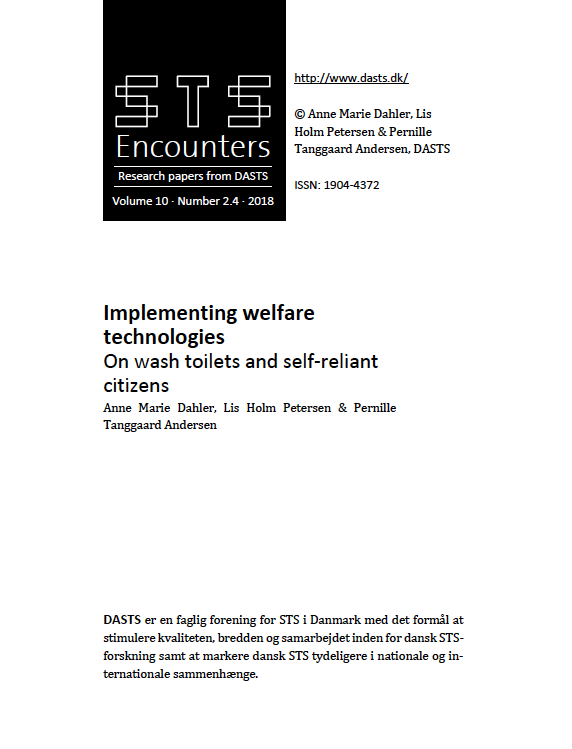Implementing welfare technologies
On wash toilets and self-reliant citizens
DOI:
https://doi.org/10.7146/stse.v10i2.135244Abstract
Welfare technology, along with science and innovation, is often presented as a means to solve what is referred to as the demographic challenge: an ageing population with more chronic diseases, fewer re-sources and fewer hands to take care of their needs. In this paper, the focus is on implementation practices regarding the use of welfare technologies for elderly people, exemplified by the implementation of the wash toilet in a specific municipality. Adhering to a socio-material view on technologies, the article focuses on how welfare technologies are enacted in terms of what they are expected to do and what kind of elderly people they are expected to produce. Based on an analysis of national and local strategies, and interviews with employees involved in various aspects of implementation, it is found that legislations, policy strategies, rehabilitation and the business-case logic enact welfare technologies/the wash toilet with different expectations and notions of the citizen, namely the self-reliant citizen, the compensated citizen and the in-dependent (of rehabilitation) citizen. The paper discusses identified tensions within and between these enactments. The main contribution of the article is to make visible the various versions of welfare technology, enacted by different socio-technical techniques involved in the implementation of welfare technologies and thereby to question the naturalised link between welfare technology and self-reliance.

Downloads
Published
How to Cite
Issue
Section
License

This work is licensed under a Creative Commons Attribution-NonCommercial-ShareAlike 4.0 International License.
Starting with volume 15, articles published in STS Encounters are licensed under Attribution-NonCommercial-ShareAlike 4.0 International (CC BY-NC-SA 4.0). The editorial board may accept other Creative Commons licenses for individual articles, if required by funding bodies e.g. the European Research Council. Previous articles are not licensed under Creative Commons. In these volumes, all rights are reserved to the authors of the articles respectively.




